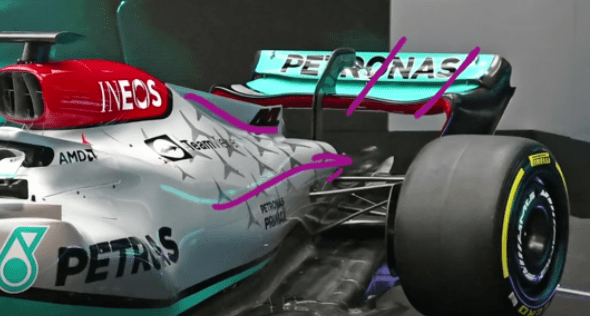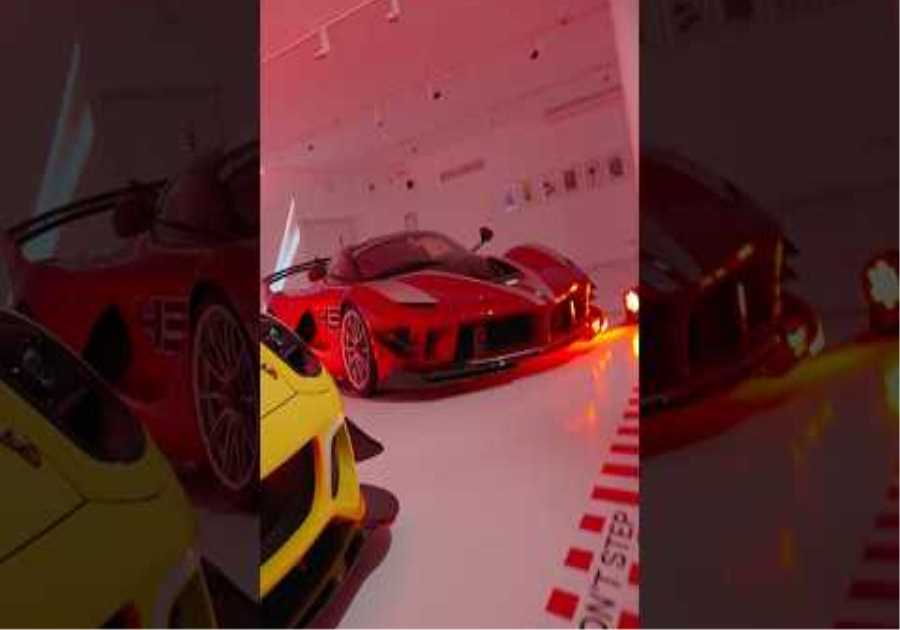
The value of one of F1’s historical car development tools may be coming to the end of its usefulness. The wind tunnel has been seen by F1 teams as a vital part of their aerodynamic design and aerodynamics still dominate the design focus on the current cars. Since 2013 the sport was more squeezed towards the power unit element for performance but as the powertrains have converged since then, aerodynamics is once again the key performance differentiator.
Mercedes AMG F1 have been all over the place this season with a number of ‘false dawn’ breakthroughs as they brought upgrades to the W13 car. Yet at the 2022 Hungarian GP George Russell took pole position from the Ferrari pair despite the Maranello team previously dominating each session in Hungary.
Team boss Toto Wolff revealed Mercedes have been forced to take shortcuts from the traditional car development process to get their car’s performance back on track.
“This season we have done unconventional things,” said Wolff. “I remember having a chat with a very clever lady in aerodynamics and she said ‘if you would have told me last year that we are putting a floor on the car that we haven’t drawn [tested] in the wind tunnel, I would have said we are never going to do this’. And we did and everybody was proud of the results.”
Horner has a dig at Aston Martin design
Wind tunnels are seriously expensive to use for aerodynamic design with the larger teams opening an estimate of £5 million a year on their operation. Then you have the spend on building a wind tunnel which is eye watering. The current budget required is between $60-$100m depending on whether it is a full size model tunnel or a module that merely uses 40% size replicas.
The 2022 FIA regulations handicap the more successful teams on their wind tunnel time. As winners of the 2021 constructors title Mercedes are allowed 280 hours this season whereas Haas get 460 hours. It’s a sliding scale based on the team’s performance. As of July Mercedes sitting P3 in the 2022 constructors title have gained 10% more time for the next rolling calendar year than Red Bull and 5% more time than Ferrari.
Of course the lead times from design via the wind tunnel to producing a component are lengthy. One of the big spends in this process is the model building division each team requires.
In 2021 there were discussions between the teams and the FIA over phasing out the use of wind tunnels by 2030. Aston Martin’s team principal at the time commented.
“The expensive bit of running a tunnel program is actually making the model parts that you have to put in a tunnel. That’s the expensive part. So if you get rid of tunnel testing, you can certainly save some money,” observed Otmar Szafnauer.
One of the big supporters of ditching wind tunnels is Red Bull’s genius designer, he said “wind tunnels have been great, but they’ve served their purpose.”
The team principal Christian Horner agrees,”It’s a topic I brought up a few months ago. A wind tunnel isn’t particularly efficient, it’s not very environmentally friendly.
“The way that CFD is evolving so rapidly – for example, the Valkyrie never went in a wind tunnel once during its whole development phase – I think if you take a 10-year view on this, so it’s far enough out that these effectively dinosaurs of machinery that are heavily consuming electricity and power become a thing of the past. F1 should be the cutting edge of technology.”
CFD, Computer Fluid Design is becoming more and more prevalent for F1 teams when designing their cars’ aerodynamic components. This is also a restricted resource by the FIA and again based on a handicap basis. CFD use is measured by computer processing requirements in terabytes and as with the wind tunnel the total amount of computer processing capacity is limited.
Aston Martin and McLaren are currently planning new wind tunnels. Yet given Mercedes have now proven skipping that process and relying on CFD and simulators can deliver new components more quickly by skipping the wind tunnel, in a more cost effective manner, is this really wise?
Toto Wolff revealed after qualifying in Hungary, “[It’s] the same thing every weekend and more so yesterday and today, we’ve tried things,” said Wolff.
“This is a data-based sport. But if you can’t rely on the data because they don’t correlate from the virtual world, from the tunnel, from CFD, from the simulations with what’s happening in real-time on the track, you’ve just got to try things and find correlations. Basically reverse-engineer correlation and this is what we’ve done today and had some positive results.”
Christian Horner adds, “We’re seeing more and more investment from the tech sector, so why not be the showcase for that tech, with F1?” Hey says. “I think if it is something like 10 years away [ditching wind tunnels]then there’s a gliding path towards it that every team knows it’s coming, and you adjust your investment over the period of time accordingly.”
Necessity is often the mother of invention and Mercedes have proved in desperation they needed to shortcut the process from car upgrade designs to delivery. By bypassing the wind tunnel process they have surely sped up the FIA insisting this expensive resource prohibitive to the smaller teams is confined to history.
READ MORE: Why Mercedes were fast qualifying in Hungary but fear the race
Did you miss our previous article...
https://formulaone.news/mercedes/lewis-hamilton-reveals-reason-he-may-quit-f1-after-sebastian-vettel-exit-f1-sports






